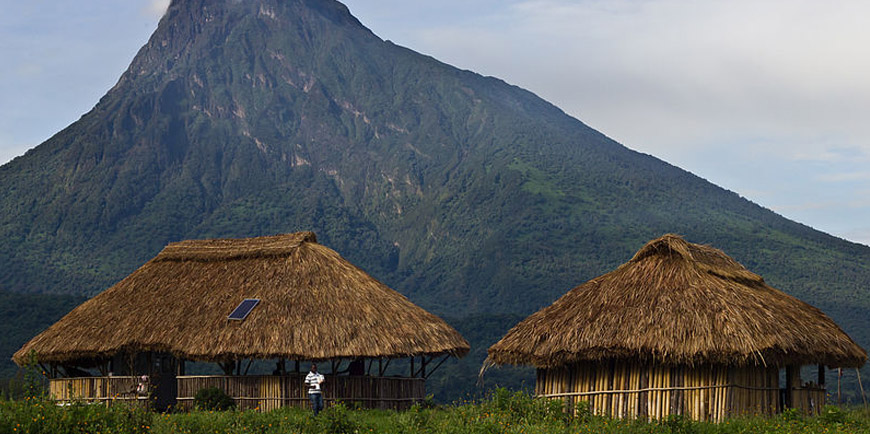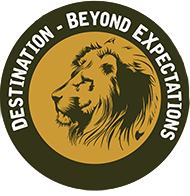
The Virunga National Park (French: Parc National des Virunga), formerly named Albert National Park, is a 7,800-square-kilometre (3,000 sq mi) National Park that stretches from the Virunga Mountains in the South, to the Rwenzori Mountains in the North, in the eastern Democratic Republic of the Congo, bordering Volcanoes National Park in Rwanda and Rwenzori Mountains National Park and Queen Elizabeth National Park in Uganda.
The park was established in 1925 as Africa’s first national park and is a UNESCO-designated World Heritage Site since 1979. In recent years poaching and the Congo Civil War have seriously damaged its wildlife population. The park is managed by the Congolese National Park Authorities, the Institut Congolais pour la Conservation de la Nature (ICCN) and its partner the Virunga Foundation, formerly known as the Africa Conservation Fund (UK).
History
The park was created in 1925 by King Albert I of Belgium as the first national park on the continent of Africa. It was founded primarily to protect the mountain gorillas living in the forests of the Virunga Mountains controlled by the Belgian Congo, but later expanded north to include the Rwindi Plains, Lake Edward and the Rwenzori Mountains in the far north.
In the first 35 years, the boundary of the park took shape, poaching was kept to a minimum and sustainable tourism thrived due to the work of a large body of hand-picked Congolese rangers and dedicated wardens. Land remuneration and the use of park resources such as fishing and hunting by the local population became an ongoing problem and attempts were made to solve these issues.
When the Belgians granted Congo independence in 1960 the new state deteriorated rapidly, and so did the park. It was only in 1969 when President Mobutu began to take a personal interest in conservation, that the park was revived. In the process of Mobutu’s Africanization campaign, it was renamed Virunga National Park, and the first Congolese Wildlife Authority was established.
Virunga fared well for the better part of the 1970s. Foreign investment helped to improve the park’s infrastructure and training facilities, and the park became a popular destination for tourists, receiving on average 6500 visitors a year. In 1979 UNESCO designated the park as a World Heritage Site.
In the mid-1980s the Mobutu regime began to lose its hold on power and the country began a long slide into chaos. The park suffered terribly. Poaching depleted Virunga’s large mammal populations, infrastructure was destroyed, and many rangers were killed. The Congolese Wildlife Authority slowly lost control of Virunga and UNESCO changed the World Heritage Site status to “endangered.”
In 2013 the World Wildlife Fund raised concerns about plans by the UK based Soco Internationalto carry out exploration for oil in the park. Currently more than 80% of Virunga National Park has been allocated as oil concessions. Soco International’s own environmental impact assessment reports admit that oil exploration is likely to cause pollution, irreparably damage habitats and bring poaching to the park. The World Wildlife Fund have launched a campaign to petition[5] Soco to refrain exploring the world heritage area for oil, and thereby avoid these outcomes. As of August 30, 2014, SOCO demobilized its operations in the DRC.
World Wildlife Fund executives now acknowledge that the battle over Virunga is hardly over. SOCO has yet to relinquish its operating permits or commit to an unconditional withdrawal.
Biodiversity
The park is known for its exceptional (bio)diversity, containing more bird, mammal and reptile species than any protected area on the African continent. Although mountain gorillas are now extremely rare and listed as one of the most critically endangered species, successful conservation work has helped to secure the remaining populations. Their populations actually increased during the years of political upheaval in the region (1994–2004), and have continued to do so even throughout the difficult period of 2007-2008. The 2010 Mountain Gorilla census has indicated that the conservation efforts of Virunga have been very successful regarding the Gorilla population. Both savanna and forest elephants as well as chimpanzees and low land gorillas can still be found in Virunga, along with Okapi, giraffes,buffaloes and many endemic birds. The neighboring Mount Hoyo area was managed with the park and is home to a population of BambutiPygmy people, caves and waterfalls.

